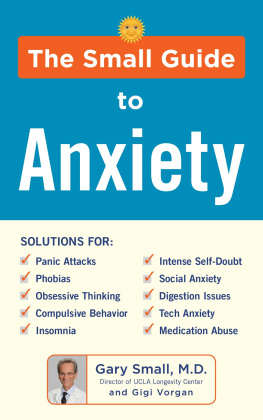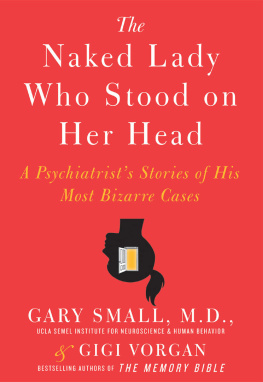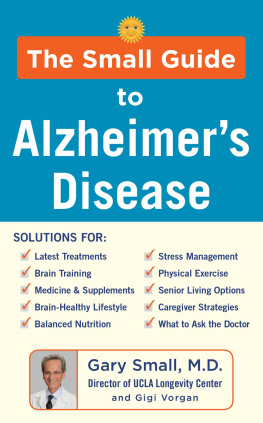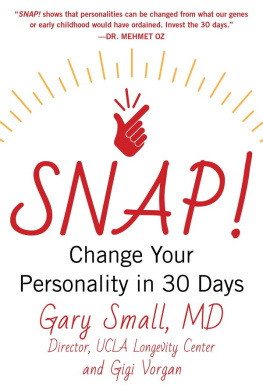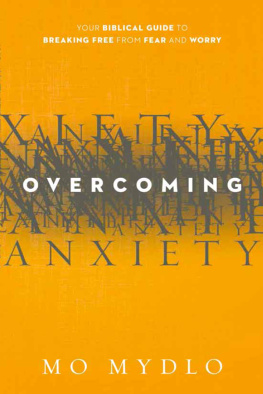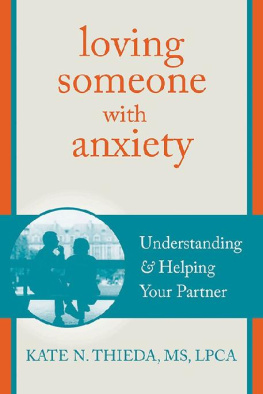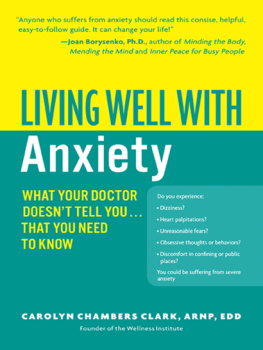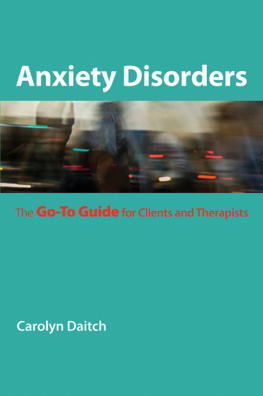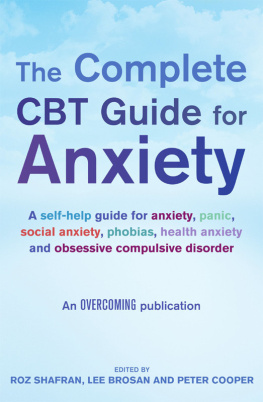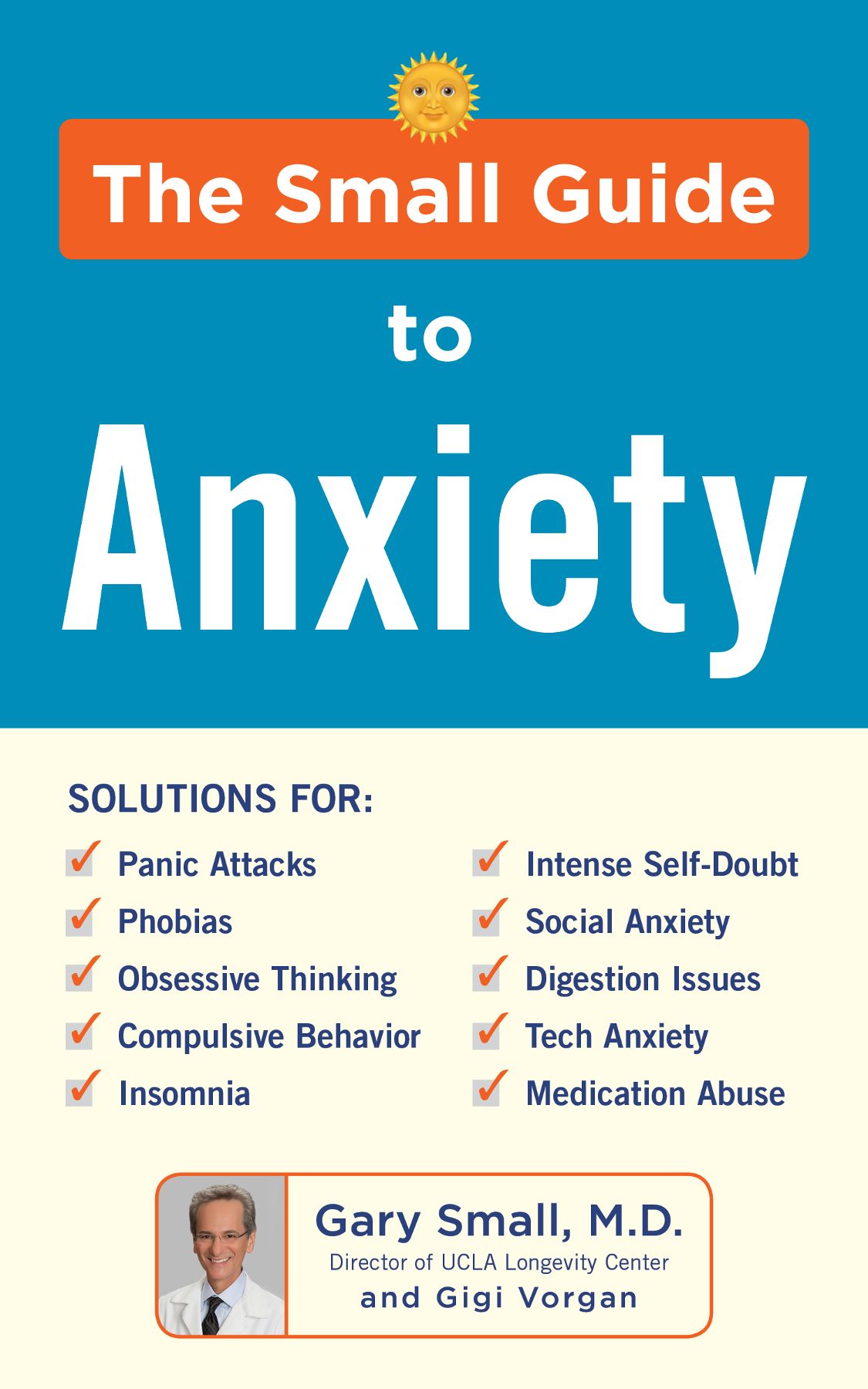
THE SMALL GUIDE TO ANXIETY
THE SMALL GUIDE TO ANXIETY
GARY SMALL, MD, AND GIGI VORGAN

www.humanixbooks.com
Humanix Books
The Small Guide to Anxiety
Copyright 2019 by Humanix Books
All rights reserved
Humanix Books, P.O. Box 20989, West Palm Beach, FL 33416, USA
Library of Congress Cataloging-in-Publication Data is available upon request.
No part of this book may be reproduced or transmitted in any form or by any means, electronic or mechanical, including photocopying, recording, or by any other information storage and retrieval system, without written permission from the publisher.
Interior Design: Scribe Inc.
Humanix Books is a division of Humanix Publishing, LLC. Its trademark, consisting of the words Humanix is registered in the Patent and Trademark Office and in other countries.
Disclaimer: The information presented in this book is not specific medical advice for any individual and should not substitute medical advice from a health professional. If you have (or think you may have) a medical problem, speak to your doctor or a health professional immediately about your risk and possible treatments. Do not engage in any care or treatment without consulting a medical professional.
ISBN: 978-1-63006-089-3 (Trade Paper)
ISBN: 978-1-63006-090-9 (E-book)
Contents
W E ARE GRATEFUL TO the many volunteers and patients who participated in the research studies that inspired this book as well as the talented investigators who performed the studies. Thank you to our colleagues, friends, and family members who provided their encouragement and input, including our daughter Rachel and our son Harrison. Thank you to Diana Jacobs for the drawings of the brain. We also appreciate the support and guidance from our longtime agent and friend, Sandra Dijkstra, her entire team, as well as Mary Glenn at Humanix Books and Chris Ruddy at Newsmax Media.
Gary Small, MD, and Gigi Vorgan
Note: Many stories and examples contained in this book are composite accounts based on the experiences of several individuals and do not represent any one person or group of people. Similarities to any one person or persons are coincidental and unintentional. Readers may wish to talk with their doctor before starting any exercise or diet program.
A LMOST EVERY ONE OF us has been or will be affected by anxiety during our lifetimes. Anxiety is a universal feeling often experienced as a state of unease over upcoming events or uncertain future outcomes. It could be a response to an immediate threat or to something imagined that might happen in the future. Whether the anxiety trigger is in the present or an anticipated future, many events and situations contribute to our anxiety.
During World War II, the threat of fascism dominating the free world was a major source of anxiety. During the Cold War, people worried about the possibility of a nuclear disaster. Today, we fret about terrorism, privacy, environmental issues, political upheaval, unstable economies, and more. Social media platforms such as Facebook, Instagram, and Snapchat provide a conduit for sharing our experiences with others; however, they often contribute to a persistent form of anxiety and peer pressurea need to be better, happier, richer, and more successful than the others on our friends list.
Anxiety has surpassed depression as the most common reason that young adults and teens seek counseling. A recent national survey of college students indicated that in 2015, more than 60 percent of undergraduates felt overwhelmed by anxiety.
Studies show that when anxiety, stress, or worry drag out or become chronic, the resulting physical changes can suppress the immune system. Such suppression will weaken the bodys defenses against infection and contribute to coronary artery disease and even heart attacks.
This book will help you distinguish normal anxiety responses from more extreme forms of distress known as anxiety disorders, which disrupt our ability to get things done. It will not only help you better understand what contributes to your anxiety; it will also help you determine whether your discomfort in a given situation is reasonable or perhaps out of proportion to the circumstances.
In the chapters ahead, you will learn several do-it-yourself techniques to lower your anxiety symptoms and how to determine whether you could benefit from professional help. Taking action to reduce your anxiety will not only improve your well-being and brain health; it will also reduce your risk of physical illnesses and help you live longer and better.
What Is Anxiety?
Dont worry about the world coming to an end today; its already tomorrow in Australia.
Charles Schulz
L INDA HEARD THE CLOCK ticking as the second hand slowly lurched forward. She tried to slow her breathingin, out, in, outbut she just couldnt get enough air. Her heart pounded like it might burst out of her chest, and she could feel her sweat soaking through her dress. Okay, she told herself, its just a job interviewnot so scary.
Avoiding eye contact with the other applicants in the waiting room, Linda stared at her rsum, but her eyes couldnt focus. Ill never get this job, she thought. Why did I come? No way do I have as much experience as these other girls.
She felt a sudden urge to urinate just as the receptionist called out, Linda Fuller?
Linda stood up quickly but got dizzy and had to sit back down.
Are you Linda?
She tried to answer, but her mouth was too dry.
Well, youre next, the receptionist said impatiently. Down the hall on the right.
Linda got up more slowly this time and started walking down the hall, but she felt her throat closing up and she froze in fear. If I dont get out of here, she thought, Im going to die. She felt a wave of nausea coming up and bolted for the exit.
***
Anxiety is a normal human emotion that everyone feels from time to time, and its very common to feel a bit anxious before a job interview. In Lindas case, however, her anxiety escalated so much that she had a panic attack, and that is relatively rare.
Most people experience anxiety as a state of unease or apprehension over an upcoming event or an uncertain outcome. It can manifest itself in various ways, and although it is usually an unpleasant feeling, most of us can either channel our anxiety into actions that dissipate the concern or accept that we cant control the outcome. People who suffer from panic attacks and other anxiety disorders often misinterpret nervousness or stress as actual physical danger that must be avoided at all costs. And although many people think of fear and anxiety as the same thing, they are actually very different.
Fear is generally an emotional response to a real and imminent threat. It is characterized by a fight-or-flight response, where the person feeling fear either confronts the source or flees from it, and the fear usually dissipates as soon as the threat is gone. Anxiety, on the other hand, is worry and anticipation of a possible threat or conflict in the future and can linger or become chronic.
Today, we face few situations that call for a fight-or-flight response. Most of our day-in, day-out worries are more mundane, like whether traffic will make us late for an appointment or whether the boss will be in a bad mood today. In recent years, however, a growing sense of impending danger from terrorism, environmental concerns, political upheaval, and disease epidemics has crept into our consciousness and left many feeling persistently apprehensive. Instead of focusing chiefly on achieving their best, many people now worry more about preventing the worst. Although this type of ongoing, low-level anxiety can be a bothersome distraction, most of us dont allow these worries to erode our overall sense of well-being.
Next page
